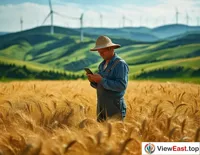
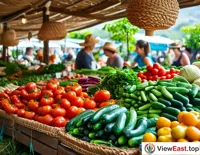


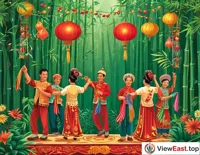

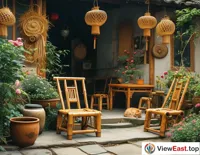
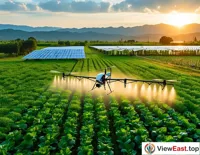
In the vast fields of China, a green revolution is quietly taking place. This revolution is not just about a change in color, but a profound transformation in concepts, lifestyles, and the direction of future development. "Green Villages: Practices of China's Rural Ecological Civilization" will take you to the heart of this revolution, exploring the great achievements of China's rural ecological civilization construction.
1. The Sprouting of the Green Revolution
The story begins with the reform and opening up, when China's rural areas experienced rapid economic development, but at the cost of environmental degradation and resource waste. In pursuit of higher yields, farmers heavily used fertilizers and pesticides, leading to soil degradation and water source pollution. However, with the introduction of the concept of ecological civilization, China began a green revolution aimed at achieving a win-win situation between economic development and environmental protection.
2. Policy Guidance and Green Transformation
Entering the 21st century, the Chinese government introduced a series of policies to guide the rural areas towards green development. From the "Beautiful Countryside" construction to the "Rural Revitalization" strategy, the policy spring breeze has brought new vitality to the countryside. Rural areas began to implement ecological projects such asconverting farmland back to forest and soil and water conservation, with green gradually becoming the main color of the countryside.
3. Technology Assistance and Smart Agriculture
Technology is the accelerator of this green revolution. The application of modern technologies such as drones, the Internet of Things, and big data has made agricultural production more intelligent and precise. Farmers can now monitor crop growth and apply fertilizers accurately through their mobile phones, reducing waste. Smart agriculture not only improves efficiency but also reduces the burden on the environment.
4. Ecological Agriculture and Green Brands
In the construction of green villages, ecological agriculture has become a new growth point. Organic agricultural products and green foods are gradually favored by the market. Farmers have begun to change their planting methods, adopting natural farming practices, reducing the use of chemical fertilizers and pesticides, and producing healthier and more environmentally friendly agricultural products. These green brands not only increase the added value of agricultural products but also enhance the sustainable development capacity of rural areas.
5. Cultural Heritage and Green Living
Ecological civilization construction is not only about the material level but also about the spiritual level. In the development of China's rural areas, attention is paid to the inheritance and protection of traditional culture, integrating green concepts into rural culture. Festivals, folk arts, and traditional handicrafts have all become carriers for spreading the concept of green living, guiding farmers to lead a more environmentally friendly and healthy life.
6. International Cooperation and Shared Green
The practice of China's rural ecological civilization construction has also been recognized and supported by the international community. Through international cooperation platforms such as South-South cooperation and the Belt and Road Initiative, China shares green development experiences with other countries and jointly addresses global environmental issues. China's green villages are becoming models for global ecological civilization construction.
7. Future Outlook for Green Villages
Looking to the future, green villages will continue to be the main theme of China's rural development. With continuous technological progress and policy optimization, China's rural areas will become more beautiful, harmonious, and sustainable. Green villages are not only a source of pride for China but also a common wealth for all of humanity.